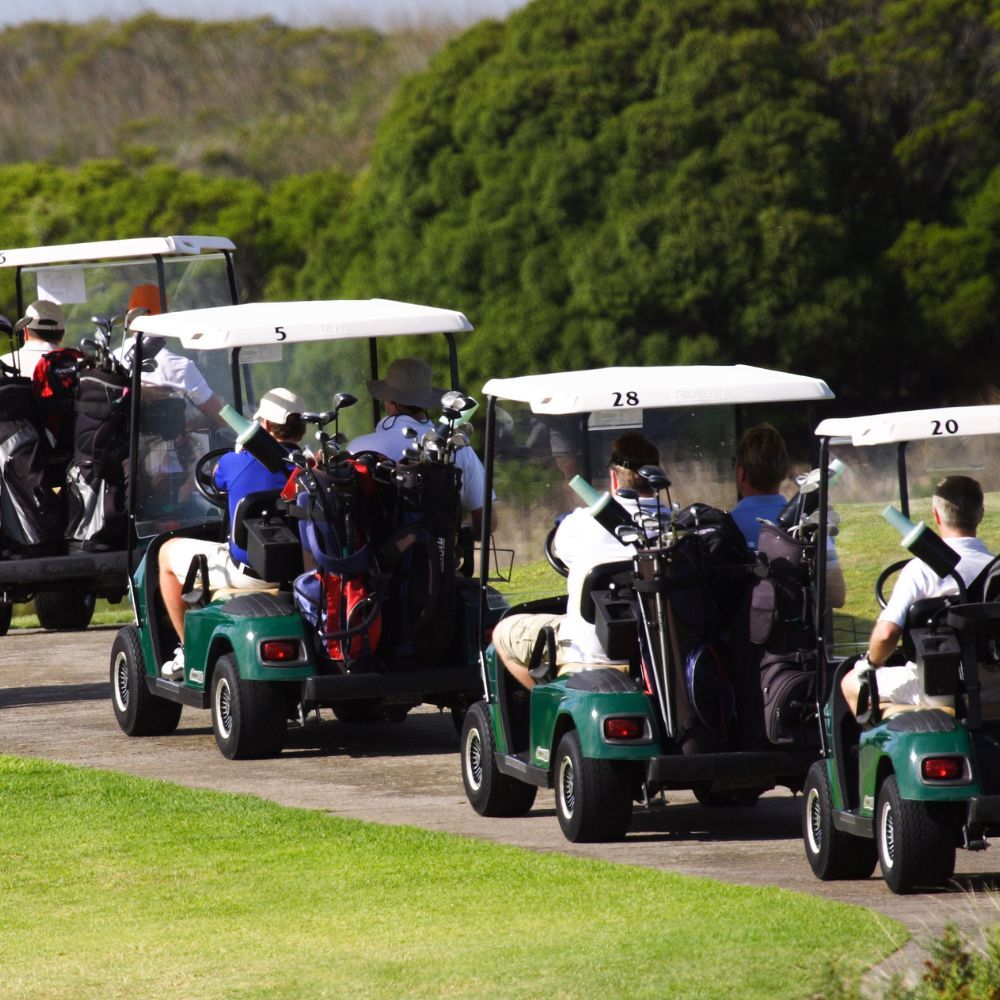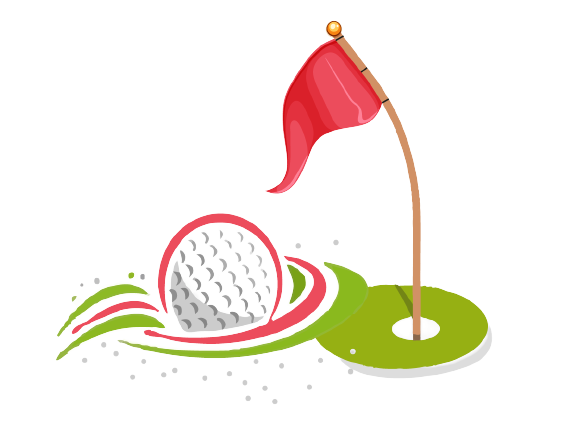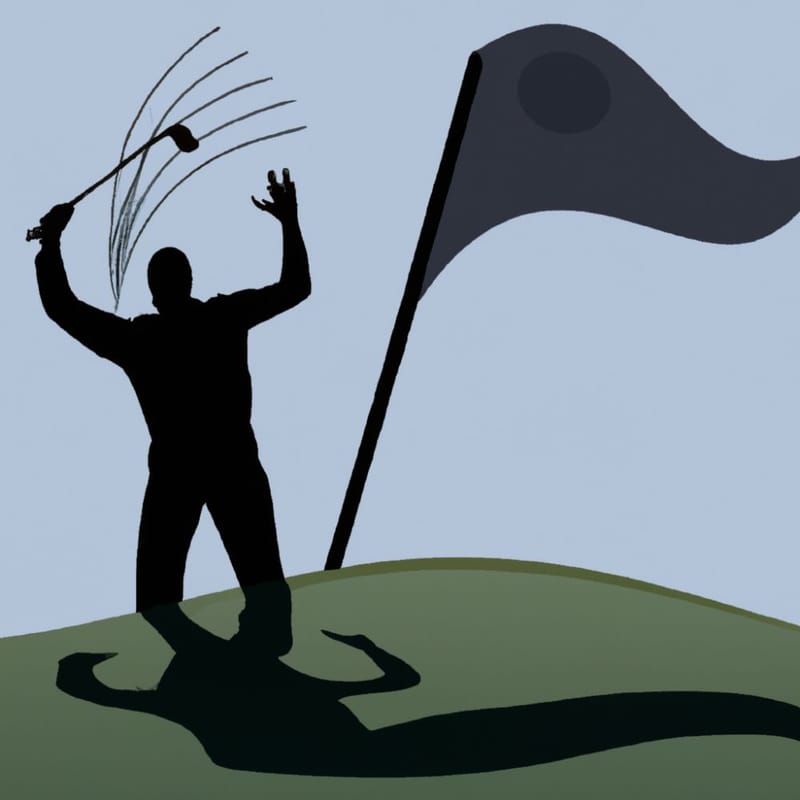Content Summary
Are you new to the game of golf and curious about the various tournament formats?
From stroke play to match play, this article explains the different types of golf tournaments that you can take part in and enjoy.
With a better understanding of these formats, you can experience a more enjoyable, thrilling game with your friends or in a competitive setting.
Introduction to Golf Tournament Formats
Golf is a popular sport, providing players with a fun and exciting way to spend the day. Since it can be played by individuals or teams, one of the main joys of golf is competition among friends.
To make golf tournaments fun for everyone, there are a variety of formats which can be used to keep everyone engaged and competitive.
For those not familiar with a golf tournament format, here is a brief guide to the most popular types available and how they work:
- Stroke Play tournaments are probably the most common type, in which each player plays all 18 holes and starts from scratch each time.
- The total score then determines who wins at the end of the round—the lowest score wins! This format requires each player to count their total number of strokes taken from tee to green over the course of 18 holes.
- The golfer with the lowest score at the end of all 18 holes is declared the winner. In stroke play tournaments, ties are usually broken by a sudden-death playoff round where golfers continue playing until one golfer outplays another.
- Match Play tournaments, players compete in head-to-head matches rather than all playing together as one large group.
- Again, this format requires an 18-hole course with score tallied at the end of each hole based on who has won that specific hole. In match play tournaments, two players or teams compete against each other in individual rounds and points are awarded based on how many holes they win or lose.
- A match is won when a player or team reaches more points than their opponent before or after all 18 holes have been completed.
- Best Ball tournaments In best ball tournaments, multiple players or teams compete against each other and only one ball per team is used for each hole.
- At the end of each hole, the best score among all players (or teams) competing is counted towards the group’s overall score for that particular hole.
- The group with the lowest combined total score at the end of 18 holes wins this tournament format as well.Other Team Events
Team events provide not only individual scores but team scores allow for providing multiple combinations where each team member may opt to play together or singles matches can be set up as well depending on individual strengths and weaknesses.
Each golfer hits their ball during a "Scramble," then the team captains select the best shot and each player place's their ball on the same position. A team that plays "best ball" utilizes the hole's lowest score after each member of the team uses his or her own golf ball the entire time.
Other golf formats include Skin Games which involves points being allocated not just on winning holes but also amassing points over multiple holes for longest drives and closest-to-pins (which adds entertainment value into this particular format).
There are also variations such as the Day & Night formats that involve playing nine holes during daylight hours followed by alternate nine during night time using either floodlights or even Glow-in-the Dark golf balls if available!
These alternate formats can help increase excitement levels but will result in longer rounds so please plan accordingly when scheduling your tournament dates & timings!

A Further Dive into Formats
Stroke Play
Stroke play event is the most common tournament format in golf and one that you’ve likely encountered. Also known as medal play, the scoring works like an aggregate of one-hole scores. Players take their best score per hole and tally them up at the end of the round to get their total tournament score.
The most widely used variation of stroke play is called stroke play with handicap, which assigns each player a handicap based on his or her average score.
The higher handicap players receive additional strokes per hole (according to their index or established handicaps).
The concept in this format is that all players within a certain range should theoretically be able to complete a round in roughly the same amount of time and thus, take about the same amount of total strokes for the entire course.
This makes it fairer for players who may not be as skilled but are still able to contribute meaningful scores towards their team’s overall result.
In stroke play tournaments, courses can either be played from “tournament tees” which have been determined by golfing professionals in order to offer all players an even playing field or they can also be laid out with various tee boxes if different skill levels are being represented among participants.
On a whole, this tournament format allows for easy scoring and requires only basic rules knowledge which makes it ideal for beginner to intermediate level players while promoting healthy competition amongst them as well.
Match Play
Match play is a tournament format that pits two paired competitors against one another in a “head to head” match. In traditional match play, the round is completed when one player or team has won more holes than the remaining holes yet to be played.
If the match has not been decided after all 18 holes are completed, tiebreaker methods can be employed to determine the winner of the match.
Match play can also be utilized as a larger format for multiple players or teams in which each matchup becomes its own round and ultimately determines who progresses.
This type of tournament is known as a match play bracketed tournament, as players are matched up based on their results from previous rounds until there is one overall winner.
In this case, if a hole remains tied at the end of any individual hole, it becomes tied and both players receive half a point. Because of this process of counting ties, an individual hole can either be worth 1 point (for winning) or ½ point (for tying). The scores are then totaled up to determine which opponent will proceed in the bracket.

Scramble
Scramble is a team golf format that is the most popular for recreational and charity tournaments. In this format, each member of the team hits a tee shot on each hole and then chooses the best drive to use for the team for that particular hole. All players hit their next shots from one spot and so on until each hole is completed.
This allows even inexperienced golfers to hit shots that can help their team score better on certain holes during play, as even a bad golfer's drives may still land in an advantageous spot that provides greater accessibility to the flag among all members of his or her respective foursome.
This format works best with four-player teams, although it isn't uncommon for larger groups (such as a five-person team) to play modified versions of the game. Scramble can be played with individual players or in pairs instead of foursomes.
Best Ball
Best ball format, also known as fourball, is a popular golf tournament format that’s played in teams of two. Everyone on the team plays their own ball throughout the round, meaning each golfer has his or her own scorecard and is competing against other teams.
At the end of each hole, the best score between the two teammates is counted as the team’s overall score for that hole. The team with the lowest combined scores at the end of 18 holes wins.
In some cases variations such as ‘scramble best ball’ are employed; in this version only one player from each team hits a tee-shot on every hole and then alternating shots are taken until each player has hit a second shot and then switched places.
But at the end of every hole, just like in regular best ball, only one countable score exists for each team – it’s just that here it can’t always be attributed to an individual golfer.
Net Stoke Play
Net Stableford Play is a golf tournament format that awards points based on the number of strokes taken at each hole. The scoring system was designed to reward players for taking risks and hitting longer shots, while penalizing them for poor play.
Points are awarded to players who complete a hole in fewer strokes than their predetermined par value.
If a player achieves a score of 1 over par, they will receive no points for that hole; if they achieve 2 over par, they will lose one point; and if they achieve 3 or more over par, they will lose two points.
This format encourages players to take risks with their shots because the potential gains far outweigh any losses from bad play. Additionally, Net Stableford Play allows weaker players to compete against stronger ones by giving them an equal chance at earning points due to the handicap system.
This makes it an ideal charity golf tournaments format for mixed ability groups and corporate events as it ensures everyone has an equal opportunity of winning prizes.
Alternate Shot
Alternate shot, also known as “foursomes”, is a team golf format that puts two competitors together to play each hole. On each hole, one member of the team tees off and then the other member plays from their tee shot. They then alternate shots until the ball reaches the cup.
The game is both fun and challenging since you need to work together with your partner to maximize each shot for optimal performance and results.
This type of tournament format can help teams develop greater trust and collaboration which may come in handy for future tournaments or rounds of golf played without a partner.
This type of tournament is typically seen more at college and recreational tournaments than professional events, but it can still provide competitive play amongst peers.
Four-Ball
Four-ball is a team game in which two players compete against each other, playing their own ball. At the end of each hole, the lower score of the two players is recorded as the team score.
This means that even if both players are over par for a particular hole, the team score may still be under par if one player’s score was lower than the other’s.
It takes skill and strategy to decide who should play which ball and how to approach certain shots in order to get the lowest combined score for your team.
Four-ball can be played as match play, where you compete against another team, or stroke play where you compete against yourself and your partner to see who has the lowest cumulated score after all 18 holes.
Shamble
Shamble tournaments involve teams of two or more players. Each player hits a tee shot, and then the best ball for the second shot is chosen between the group of players.
All players then play their second shots from that spot, and the process continues with the third shot and so on until all players have holed out on each hole. The lowest total score for the team is recorded as their score for that particular hole.
This means that if one player has a great round while his partner has an average round they can still record a low score on that hole because only the best ball is taken into account.
This scoring system makes it easier to play in groups with varying skill levels, as even lower handicap golfers can benefit from playing worse shots when needed.
Shamble formats are often used in charity events or corporate outings where scratch golfers are mixed with those who are newer to golf, providing a fun and competitive environment for all types of participants.
Stableford
Stableford is a popular tournament format used in golf competitions. It was invented by an English barrister, Dr. Frank Stableford, in 1898 but but wasn't used in competition until more than 30 years later at Wallasey Golf Club in England and is often considered the fairest way to play a round of golf.
The main idea behind the system is that players are rewarded for doing better than par on each hole and penalized for doing worse than par. In traditional Stroke Play, double bogeys and worse can really hurt your score whereas with Stableford they do not necessarily mean disaster.
The scoring system works as follows: 0 points are awarded for double bogey or worse; 1 point for a bogey; 2 points for par; 3 points each birdie; 4 points each eagle and 6 points each double eagle (albatross).
This means that even if you card multiple pars throughout your round, you still have an opportunity to win based on how many birdies and eagles you can make. As such, it encourages more aggressive play which can sometimes lead to higher scores but ultimately makes the game more exciting overall.
In addition to being a great way to spice up competitive matches, Stableford is also commonly used in tournaments where prizes are awarded based on individual performance rather than overall team score.
It’s simple enough for beginners but has enough depth that experienced players will still find it challenging and engaging at the same time.
Chapman or Pinehurst
Chapman is a golf tournament format that was invented by Walter Travis in the early 1900s. It is played with two players and each player has their own ball.
The players alternate shots on each hole until they holed out, then count up their scores at the end of the round to determine who won. This format offers an even playing field, since both players have equal chances to hit good shots and make birdies or even eagles during the round.
Additionally, since there are only two players there is less pressure on one person to carry the other, which can help foster a more relaxed atmosphere during play.
Pinehurst is another golf tournament format that originated in North Carolina in 1898. Unlike Chapman, Pinehurst requires four-player teams and each team member alternates hitting a single ball for every shot until it's holed out.
The team score for each hole is taken from the lowest individual score among all four teammates for that particular hole.
This type of competition encourages collaboration among teammates as they work together to produce a low score for each hole while still contributing individually when needed – such as when making an eagle putt or getting out of trouble off the tee box.
Pinehurst also creates an interesting dynamic between teams since you not only want your own scores to be low but also those of your opponents’ so you can stay ahead in overall stroke points!
Bingo Bango Bongo
Bingo Bango Bongo is a popular golf tournament format that is fun for both professionals and beginners. It combines elements of stroke play, skins game, and team play to create an exciting competition with plenty of opportunities for success. The concept behind Bingo Bango Bongo is simple: each player earns points based on their performance on each hole.
One point for being the first player to get onto the green (bingo), one point for the closest shot to the pin (bango), and one point for being the first player to make par or better on any given hole (bongo). At the end of 18 holes, whichever golfer has accumulated the most points wins.
Bingo Bango Bongo also provides a great opportunity for teams to work together strategically in order to maximize their chances of winning with that team's score.
Teammates can coordinate their shots in order to gain an edge over other players, such as trying to land shots close together so they can both earn bango points or playing more conservatively in order to avoid costly penalties that could lower their overall score.
Additionally, because all participants are actively competing against one another throughout the entire round, it makes for a very engaging and enjoyable experience regardless of skill level.
Conclusion
Golf tournament formats are a fun and exciting way to enjoy the game of golf, while also introducing more competition into your round. If teammates switch balls during the competitions they can be penalized or disqualified so it's important to mark your ball.
Depending on the type of competition desired, tournaments can range from individual stroke play events and team scramble events to more complex specialty formats. Knowing the different golf tournament formats can help ensure that you select the most suitable format for your event.
Whether it’s a charity golf tournament outing or a corporate retreat, the right golf tournament format will help make for an enjoyable and memorable experience for everyone involved. Just remember that there is no one-size-fits-all solution when it comes to choosing what format to use – so don’t be afraid to get creative and experiment with different options until you find the best fit!
Thank you for visiting, and we hope to see you back soon!








